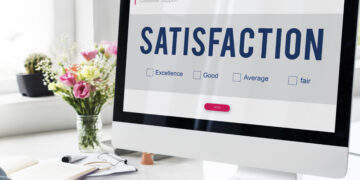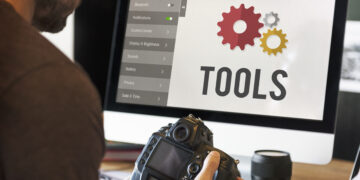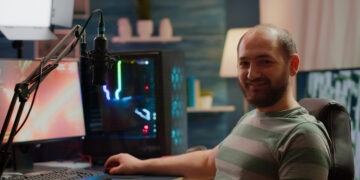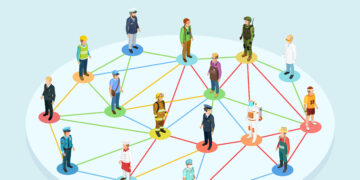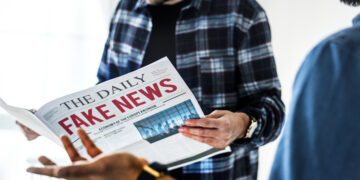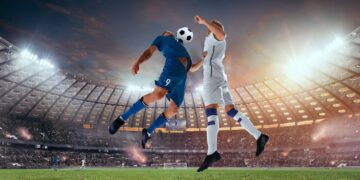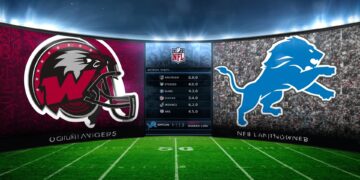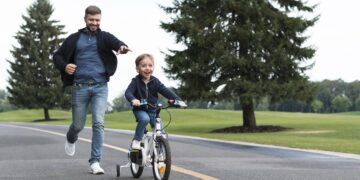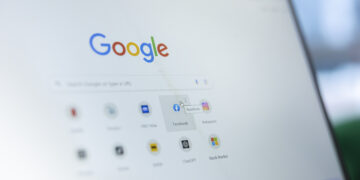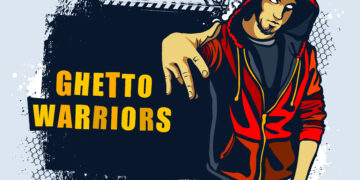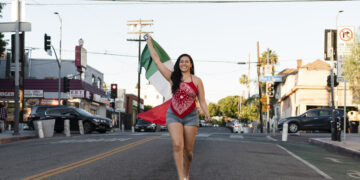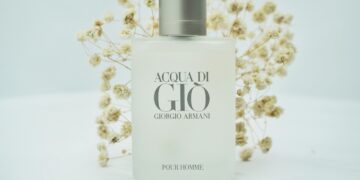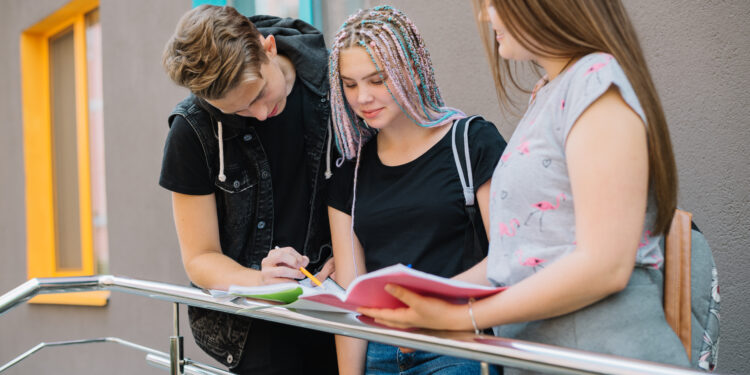Headlines vs. the human
When the phrase “justin bieber paralyzed” began trending, the speed of the news cycle risked flattening a complex, deeply human health moment into a single alarming word. In June 2022, Justin Bieber explained directly to fans that he’d been diagnosed with Ramsay Hunt syndrome, which caused facial paralysis on one side of his face. The video was personal, measured, and specific about his symptoms. Headlines traveled farther than the nuance, though, and “justin bieber paralyzed” became a shorthand that could easily be misread as full-body paralysis or permanence. This article focuses on the person behind those headlines, the medical context around his condition, and the language choices that either clarify or distort reality. The goal is simple: tell the truth with care, honor privacy, and offer readers a grounded view of what happened, why it mattered, and how words—especially “paralyzed”—shape the way we understand a public figure’s health.
What we know
Justin Bieber publicly shared that he had Ramsay Hunt syndrome, a condition that can inflame the facial nerve and cause one-sided facial weakness or paralysis. He showed exactly how his facial muscles were affected and openly discussed the impact on performing. In the weeks that followed the “justin bieber paralyzed” headlines, shows were postponed and then, after attempts to resume, the tour was ultimately halted so he could prioritize recovery. Over time, he posted signs of improvement, including more symmetrical facial movement, a hopeful development consistent with recovery patterns for many people with timely care. Medical sources widely reference the role of antivirals, steroids, and rest in treatment decisions, but every case varies. Through it all, Justin’s updates remained direct and human, redirecting attention from speculation toward measured information and the reality of healing at an individual pace.
| Key | Detail |
|---|---|
| Name | Justin Drew Bieber |
| Profession | Singer, songwriter, performer |
| Notable health topic | Ramsay Hunt syndrome with facial paralysis |
| First public explanation | June 2022 video posted to his social channels |
| Immediate impact | Postponed and later halted tour dates |
| Symptom highlight | One-sided facial paralysis affecting eye and smile |
| Care approach | Physician-guided rest, medication, and therapy considerations |
| Recovery signals | Later clips showing improved facial movement |
| Communication tone | Transparent, empathetic, setting healthy boundaries |
| Support system | Family, spouse, friends, clinical team, fans |
| Media lesson | Use precise language; avoid sensational framing |
| Ongoing priority | Health first, career paced responsibly |
Timeline
The timeline begins with early 2022 symptoms culminating in a June 2022 announcement, followed by immediate show postponements, cautious attempts at resuming performances, and ultimately a longer pause to put health first. After the “justin bieber paralyzed” wave of headlines, Justin resumed select dates in Europe and a few events, which many read as a sign of cautious optimism. By late 2022, he paused again to rest after the return proved more taxing than expected. In 2023, remaining dates were taken off schedules and ticketing platforms as he maintained a health-first stance. Fans also saw a brief video showing improved facial mobility, a quiet but powerful note of progress. Across that period, the guiding thread was consistent: a gradual reassessment of commitments in light of medical needs, respect for limits, and public updates sparingly delivered when they were clear and helpful.
Daily realities
Facial paralysis changes small daily actions in ways most people never consider, and that’s part of what “justin bieber paralyzed” didn’t capture. Eating can take longer when one side of the mouth doesn’t seal fully; smiling on cue in an industry built on eye contact and presence becomes work; blinking can feel strange when one eyelid doesn’t close completely; speaking on camera requires patience as muscle control returns or compensates. For a singer, even subtle asymmetry can influence diction, breath support, and comfort onstage. These realities aren’t dramatic, but they are intimate and tiring. Give anyone—celebrity or not—time to adapt, use therapy tools when appropriate, and rest without feeling like they’re falling behind. Justin’s decision to slow down wasn’t just strategic; it was humane, and it acknowledged the practical, everyday challenges most headlines never explain.
Emotional landscape
Health uncertainty, especially in public, can feel like a moving target, and that’s where compassion matters most. When the phrase “justin bieber paralyzed” surged, it came with an unavoidable emotional load: fear among fans, pressure on the team around him, and the inner turbulence of not knowing exactly how quickly nerves would recover. People with facial paralysis often talk about identity friction—how it feels when your expression doesn’t match how you feel inside. For a performer whose face is part of the instrument and the brand, that friction is amplified. A supportive environment, steady counseling if desired, and gentle expectations are the antidote. Justin’s notes of gratitude to fans for their patience were a reminder that the audience can be an ally in recovery, not a source of deadlines.
Support system
Recovery happens in community, even when the work is deeply personal. In Justin’s case, support likely included family and spouse, close friends, tour staff recalibrating schedules, and clinicians guiding care. The “justin bieber paralyzed” moment invited an outpouring of empathy, from simple well-wishes to more deliberate choices like not sharing unverified rumors. That network matters. It buys time, protects privacy, and nudges the conversation toward health instead of productivity. It’s also where sober guidance comes from: a doctor clarifying what the next week might look like, a friend reminding you that rest is not defeat, a partner holding space for frustration without trying to fix it. Public figures are often described as solo success stories; in recovery, the truth is always more communal.
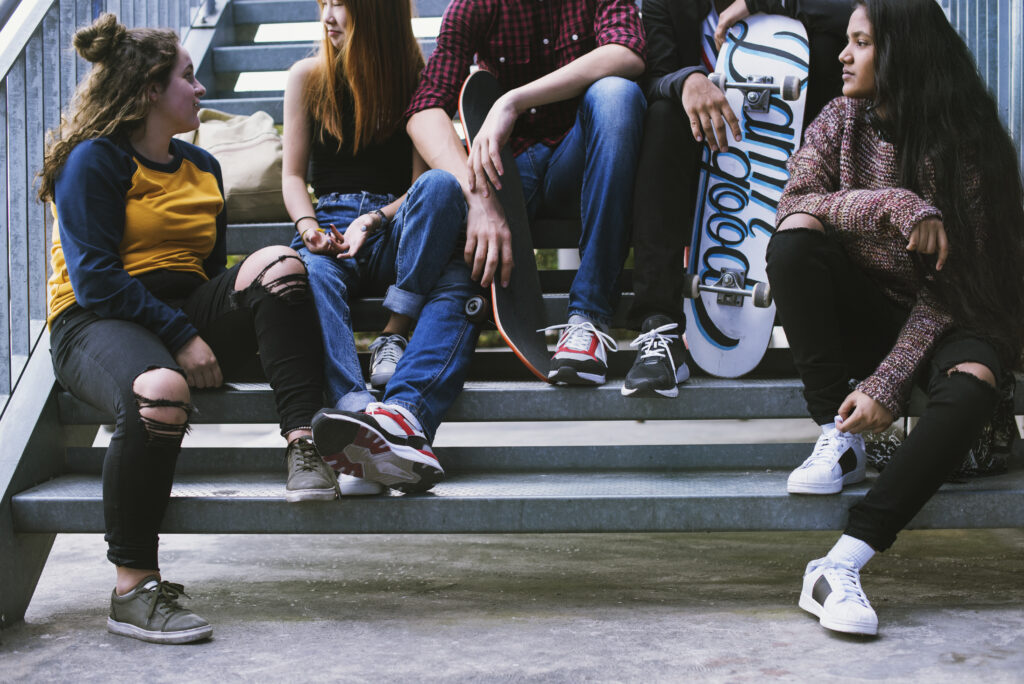
Boundaries and privacy
Being a public figure doesn’t erase the right to heal without surveillance. Justin chose what to share and what to keep close, a boundary that should be honored by fans and media alike. The viral nature of “justin bieber paralyzed” meant speculation could spiral, but his own updates set the record that matters. Good coverage respects that line: it quotes accurately, avoids guessing about prognosis, and doesn’t forage in private medical details. Privacy isn’t about secrecy—it’s about dignity. In practice, it looks like waiting for direct statements, staying within confirmed facts, and remembering there’s a person with relationships and hopes at the center of the story.
Understanding Ramsay Hunt syndrome
Ramsay Hunt syndrome is a complication of varicella-zoster virus reactivation that can inflame the facial nerve near the ear, sometimes affecting hearing and balance as well. Medical references from organizations like Mayo Clinic, NIH, and major academic centers explain that this reactivation can lead to a cluster of symptoms: one-sided facial weakness or paralysis, ear or facial pain, and sometimes a rash in or around the ear. It is not the same as a stroke, and in many cases, timely treatment improves outcomes. This is the clinical frame behind “justin bieber paralyzed.” The term “paralyzed” describes a local nerve function loss in this context, not global paralysis, and it often changes as inflammation resolves and nerves recover. Each case is personal, which is why patient updates, not projections, are the fairest guide.
Symptoms in plain terms
In plain language, one side of the face can become weak or still, the eye may not blink fully, the smile may lift unevenly, and speaking can feel off because the mouth doesn’t move symmetrically. Some people also experience ear pain, sensitivity to sound, or a small blistering rash near the ear due to the pattern of the nerve branches involved. For singers and public speakers, these symptoms show up in performance and comfort: articulation, vowel shaping, and even onstage confidence can be affected. This is the texture behind “justin bieber paralyzed,” a phrase that needs context so readers understand it refers to localized, one-sided facial paralysis, not a permanent or full-body condition.
Treatment and care
Typical care is time-sensitive and guided by a clinician, often using antiviral medications, corticosteroids, rest, and, when appropriate, facial physical therapy. The goal is to reduce inflammation, limit viral activity, and support nerve recovery. Eye care is a practical priority if the eyelid doesn’t close fully, using lubricating drops or protective strategies to prevent dryness. The plan is individualized: some people recover quickly, others need more time; some benefit from targeted therapy or exercises, others focus on rest and gradual return. Many reputable sources emphasize seeing a healthcare professional promptly when symptoms start. The broad strokes of Justin’s updates—pausing work, seeking treatment, noting improvements—track with this clinical picture and help explain the cadence of news after “justin bieber paralyzed” first appeared.
Recovery outlook
Outcomes vary, but many people improve significantly, especially with timely care, and some recover fully over weeks to months. Medical literature notes that nerve recovery can be uneven, with small wins accumulating—more eyelid movement, a more even smile, better control of the cheek—before strength is fully back. In some cases, residual tightness or synkinesis (unintended linked movements) can linger and benefit from therapy. The hopeful part of Justin’s story is that he showed visible improvement over time. That’s why treating “justin bieber paralyzed” as a permanent label misses the point; it was a snapshot of a moment, not the story’s final frame.
Language matters
Words can either inform or inflame, and “paralyzed” is one of those words that needs precision. In neurologic and ENT contexts, “facial paralysis” is a legitimate clinical term, but most readers hear “paralyzed” and picture whole-body immobility. The distinction matters. In reporting on “justin bieber paralyzed,” accurate phrasing looks like this: Justin explained he had one-sided facial paralysis due to Ramsay Hunt syndrome, affecting his ability to perform; he later showed signs of recovery. That sentence honors the diagnosis, the scope, and the trajectory. Swapping accuracy for drama may spike clicks; it erodes trust. Precision is not pedantry—it’s respect for the person at the center of the story and for the audience trying to understand.
Media literacy
Responsible coverage starts with the person’s own words, adds verified medical context, and avoids leaps about prognosis. When “justin bieber paralyzed” trended, the best reporting quoted his video directly, named Ramsay Hunt syndrome, and made clear this was one-sided facial paralysis. It also clarified that recovery can be strong with care and time. The habits that help readers: look for direct quotes, note when a diagnosis comes from the person or a physician, and be cautious with verbs like “confined” or “struck” that dramatize rather than explain. If a story predicts outcomes without attribution, that’s a cue to pause. Media literacy is not skepticism for its own sake; it’s a way to keep care and clarity at the center.
Social media dynamics
Social platforms can amplify both empathy and error, sometimes within the same hour. The initial wave of “justin bieber paralyzed” posts generated sincere support, along with rumor loops built from out-of-context clips. What helps in that environment is disciplined sharing: prioritize posts from the person or clearly identified official channels, avoid recirculating medical claims without sources, and resist the urge to decode facial expressions frame by frame. For fans, the most meaningful contributions are often the quiet ones—patience, well-wishes, and a willingness to let the person set the update pace. Social media is a megaphone; it can be gentle too.
Career impact
Health events ripple through schedules, contracts, and creative plans, and Justin’s approach—rest first—was a pragmatic response to reality. After “justin bieber paralyzed” headlines landed, tour dates were reworked, then paused, and eventually removed to prevent uncertainty from compounding stress. That decision protected fans from repeated reschedules and protected Justin from the strain of commitments outpacing recovery. In a business used to momentum metrics, stepping back takes resolve. It also models something healthier for younger artists: longevity beats speed. When the voice and face are your instruments, safeguarding them is not indulgence; it’s craft.
Creativity and pacing
Creative work rarely thrives on pressure when the body is asking for patience, and pacing can be a form of artistry in itself. The time Justin took after the “justin bieber paralyzed” surge wasn’t a retreat from music; it was a reframe. Writing, experimenting in the studio, or simply resting can all be creative acts when they honor the conditions needed to make good work. The industry often confuses productivity with presence, but artists know: the songs that last typically come from a body and mind not running on fumes. In that sense, pacing is not only healthy—it’s strategic.
Ethics and dignity
There’s a way to write about health that centers dignity, and it starts with consent, accuracy, and restraint. In Justin’s case, that means using the language he used, crediting his statements, and not inferring private medical details. It also means avoiding adjectives that sensationalize symptoms. “justin bieber paralyzed” may be a search phrase, but the ethical approach is to frame it correctly: one-sided facial paralysis due to a specific, named condition. Ethics is not an add-on; it’s the core of credible storytelling, particularly when the subject is a person’s health.
Lessons for fans
Fans shape the culture around the artists they love, and small choices add up. In the wake of “justin bieber paralyzed,” the most helpful fan behaviors were simple: believing the person’s own updates, avoiding urgent speculation, and giving time. Fans can also learn about conditions like Ramsay Hunt syndrome from reputable sources, building literacy that outlasts a single story. The intimacy of fandom is powerful; it can be protective, too, when it chooses patience over pressure and curiosity over gossip.
Health context for public figures
Public figures navigate a paradox: their work depends on visibility, and their healing depends on quiet. When “justin bieber paralyzed” became a trending phrase, it reflected how quickly a personal health update can turn into a public narrative. The healthiest resolution aligns the two: share enough to be honest and reassuring, then step back to do the actual work of recovery. Audiences can help by letting updates be updates, not open invitations to dissect every frame. The reward for that restraint is simple: better art, made by a person who wasn’t forced to choose between transparency and well-being.
Where things stand
The picture that emerges after the initial “justin bieber paralyzed” spike is one of measured recovery, recalibrated schedules, and an artist prioritizing stability. Justin showed improved facial movement, paused touring to prevent overreach, and kept public statements focused and sparse. That balance—between letting fans in and protecting health—has been consistent. It’s fair to expect that future appearances and projects will continue to reflect a “health first” filter. In the meantime, the story is not lack or loss; it’s stewardship. A career with staying power often looks like this: clear boundaries, careful pacing, and gratitude for an audience that understands.
Is Justin Bieber actually “paralyzed,” or was it facial paralysis?
Short answer
It was one‑sided facial paralysis, not whole‑body paralysis. Justin Bieber explained that Ramsay Hunt syndrome affected the facial nerve on one side of his face, leading to weakness and loss of movement there.
What that means
“Paralyzed” is a heavy word. In neurology and ENT settings, “facial paralysis” accurately describes weakness or stillness of muscles on one side of the face when the facial nerve is inflamed. It doesn’t mean he couldn’t move his arms or legs. It also doesn’t automatically mean the change is permanent.
Why it matters
The phrase “justin bieber paralyzed” became shorthand online. Precision helps fans understand the real situation: localized nerve inflammation causing one‑sided facial paralysis that can improve with time and care. Treating that phrase like a permanent, whole‑body label isn’t accurate and doesn’t reflect what he showed in his own updates.
What did Justin say in his own words?
The core of his update
Justin posted a video in June 2022 explaining he had Ramsay Hunt syndrome. He calmly demonstrated that one side of his face wasn’t moving—the eye wasn’t blinking normally, his smile lifted unevenly—and he explained why performing wasn’t possible at that time.
Tone and intent
His message was straightforward and humane. He thanked fans for understanding, was transparent about short‑term show postponements, and set the expectation that recovery would take rest and patience. There was no sensational language—just a person showing what was happening and asking for time.
Later signals
In the months that followed the early “justin bieber paralyzed” headlines, he periodically showed signs of improvement, including clips with more symmetrical facial movement. He also made careful choices around touring, pulling back when the return proved too taxing. The through‑line stayed the same: health first, honesty with fans, and no overpromising.
What exactly is Ramsay Hunt syndrome?
The medical basics
Ramsay Hunt syndrome happens when the varicella‑zoster virus (the same virus that causes chickenpox) reactivates near the facial nerve. The nerve passes through a narrow bony canal near the ear. When the dormant virus reactivates and causes inflammation, signals to facial muscles can get disrupted, leading to one‑sided facial weakness or paralysis.
Common symptoms
Typical features include:
- One‑sided facial paralysis or weakness
- Ear pain or a feeling of fullness/pressure
- Sensitivity to sound on the affected side
- Sometimes a blistering rash in or around the ear
- Occasionally, changes in taste, dizziness, or hearing changes
Not everyone has the rash, and symptom combinations vary.
Why early care helps
Clinicians often consider antiviral medication and corticosteroids early in the course to reduce viral activity and nerve inflammation. Prompt evaluation matters because the facial nerve is delicate, and reducing swelling early can support better recovery.
Is facial paralysis from Ramsay Hunt permanent?
The spectrum of outcomes
Many people recover significantly, and some recover fully, especially with timely care. Recovery can take weeks to months. The nerve may heal unevenly at first, so progress can look like small wins: better eyelid closure, a more even smile, improved cheek control.
What affects recovery
Several factors matter:
- How quickly treatment begins after symptoms start
- The degree of nerve involvement at onset
- Individual health factors and stress load
- Consistency with rest and therapy, when prescribed
Some people experience residual tightness or “synkinesis,” where one facial movement triggers another unintentionally. Specialized physical therapy can help retrain these patterns.
Justin’s situation in context
Justin’s public updates included visible signs of improvement after the initial “justin bieber paralyzed” news. He demonstrated more balanced facial movement in later clips, aligning with a positive recovery trajectory, while continuing to pace his workload.
How did this affect his singing and stage performance?
The mechanics of singing
Singing is full‑body work. Facial muscles shape vowels and consonants. The lips and cheeks help form plosives and control resonance. Breath support, phrasing, and on‑stage expression all rely on coordinated facial movement. When one side is weak, articulation and comfort can change, even if the voice itself remains strong.
The reality of touring
Tours involve fast travel, late nights, high volume, and constant social energy. That load is tough during nerve recovery. Eye discomfort from incomplete blinking can be distracting under bright stage lights. In‑ear monitors and loud stages can feel intense if there’s ear sensitivity on the affected side.
The practical choice
Given those realities, pausing shows was a practical health decision, not a lack of will. It prevented strain, allowed rest, and reduced the risk of setbacks. The phrase “justin bieber paralyzed” framed the moment—but the follow‑through was about safeguarding the instrument: his face and voice.
Why were tour dates postponed and later canceled?
Immediate impact
After sharing his diagnosis, Justin postponed shows to give treatment and rest a chance to work. That early window is crucial in nerve recovery. Fans were updated that this wasn’t a cancellation of music or a career pause—it was a temporary step to prioritize health.
Attempted return and reassessment
He made a measured return for select dates and events, signaling cautious optimism. But performing proved more taxing than expected over time. In September 2022, after a major festival appearance, he paused again to focus on recovery.
Final decision on remaining dates
By early 2023, remaining dates on the Justice World Tour were taken off schedules and ticketing systems. That decision avoided serial postponements and respected both fans’ planning and the artist’s healing. It was a tough call, but the right one: clarity over uncertainty, health over momentum.
How is his health now?
Signs of improvement
Following the first wave of “justin bieber paralyzed” headlines, Justin shared clips showing improved facial symmetry, a hopeful sign consistent with real nerve recovery. He has also made selective public appearances when comfortable, underscoring that progress isn’t theoretical—it’s visible.
Health‑first pacing
His choices continue to reflect a health‑first approach: fewer obligations, careful scheduling, and space for rest. That pattern is common among performers recovering from facial nerve issues. It protects gains and prevents the “two steps forward, one step back” trap of overexertion.
What to expect
Predicting timelines is tricky because nerve healing isn’t linear. It’s fair to expect future performances and appearances to align with how he feels, not with external pressure. The best guide remains his own updates. When he’s ready, he tells people. When he needs quiet, he takes it.
What does treatment usually involve?
Typical clinical approach
While every plan is individualized, doctors commonly consider antivirals and corticosteroids early to fight viral activity and reduce inflammation. If the eyelid doesn’t close fully, eye protection is a priority—lubricating drops, ointments, or taping at night to prevent dryness and injury.
Rest and pacing
Recovery asks for sleep, stress reduction, and gentle pacing. The facial nerve heals best without a constant flood of adrenaline and fatigue. That doesn’t mean doing nothing—it means a rhythm that supports healing instead of testing it.
Rehabilitation options
When appropriate, facial physical therapy can help. A therapist trained in facial nerve disorders can teach gentle movement retraining, massage for tight areas, and techniques to reduce synkinesis. Over‑exercising or forcing movements can backfire; guided, precise practice works better than intensity.
Do facial exercises and therapy really help?
Why guidance matters
Yes, with the right guidance. Facial retraining isn’t about building strength like a bicep curl; it’s about restoring coordinated, accurate signals along a healing nerve. Done well, therapy helps the brain recalibrate which muscles fire and when.
Common techniques
Therapists may use:
- Gentle cues to isolate specific muscles
- Mirror feedback and slow‑motion practice
- Soft tissue work to ease tightness
- Neuromuscular re‑education to reduce synkinesis
The goal is quality over quantity—small, controlled movements that tell the nerve what “normal” feels like again.
Patience over pressure
Progress can be subtle, then suddenly more obvious. Pushing too hard can reinforce the wrong patterns. That’s why many clinicians advise short, frequent, focused sessions over long, exhausting ones. In other words: steady wins.
Is Ramsay Hunt syndrome contagious? Can fans “catch it”?
The simple truth
You can’t “catch” Ramsay Hunt syndrome from someone in the way you catch a cold. It’s a reactivation of a virus already inside a person’s body from earlier in life (often from childhood chickenpox).
When there is a rash
If someone has the characteristic blistering rash in or around the ear, the fluid in the blisters can spread varicella‑zoster to people who’ve never had chickenpox or the vaccine. In those cases, the exposed person could develop chickenpox—not Ramsay Hunt. Sensible hygiene and avoiding direct contact with open lesions address that risk.
Public interaction context
Justin’s updates were controlled and respectful of health guidelines. Ordinary public interactions do not pose a practical risk. The key point for fans: “justin bieber paralyzed” does not describe a contagious illness you can pick up from being near him.
Why did the headlines say “paralyzed,” and is that accurate?
The clinical vs. the colloquial
In medicine, “facial paralysis” is a precise term for one‑sided facial weakness due to nerve dysfunction. Colloquially, “paralyzed” often implies whole‑body immobility or permanence. That gap created confusion.
How nuance gets lost
Headlines need to be short. “justin bieber paralyzed” fits a character count and grabs attention. But it misses the qualifiers that matter: one‑sided, facial, often temporary, related to Ramsay Hunt syndrome. Without those, readers can picture something much worse than reality.
Doing it better
Responsible phrasing looks like: “Justin Bieber shares he has one‑sided facial paralysis from Ramsay Hunt syndrome; postpones shows to recover.” It’s still clear and compelling—just accurate. Choosing precision respects both the subject and the audience.
How can fans be supportive without adding pressure?
Believe the person
The most helpful action is simple: trust Justin’s own updates. When he says he needs rest, he needs rest. When he shows improvement, celebrate it without demanding more.
Share responsibly
Avoid reposting clips or claims that lack context. Don’t amplify rumors or medical guesses. If you share news, use wording that reflects what he actually said: one‑sided facial paralysis, recovery in progress, health first.
Respect privacy and pace
Healing under a spotlight is hard. Kindness looks like patience. It also looks like letting appearances be a gift, not an obligation. Fans have been a source of strength in this story—notes of support, understanding about tour changes, and a willingness to wait.
Does stress, sleep, and lifestyle really make a difference during recovery?
The body keeps score
Nerve healing has its own timetable, but stress, sleep, and overall load can influence how the body manages inflammation and recovery. Touring life stacks the odds toward fatigue; stepping back rebalances them.
Practical habits
Plenty of sleep, steady nutrition, hydration, and gentle movement all support the nervous system. Managing stress—through counseling, mindfulness, or simply more unstructured time—can reduce the background noise that competes with healing.
The bigger picture
Justin’s choices after the first “justin bieber paralyzed” wave reflect these truths: scale down, recover well, then rebuild. It’s not glamorous, but it works. Health is the foundation for the art fans care about.
What can we learn from the way this was handled?
For media and creators
Lead with the person’s own words. Name the condition accurately. Avoid speculating on timelines or permanence. Remember that clicks fade; trust lasts.
For fans and the public
Choose empathy over urgency. Let “justin bieber paralyzed” be a search phrase, not a verdict. Share carefully. Offer support without setting expectations. There’s a human being inside every headline.
For anyone facing a similar diagnosis
Seek prompt medical care. Protect your eye if your eyelid doesn’t close fully. Rest more than you think you need. If you pursue therapy, find a clinician experienced with facial nerve recovery. Progress may be zig‑zag, but it adds up.
Closing reflection
Headlines compress; lives expand. The phrase “justin bieber paralyzed” condensed a private medical challenge into a single dramatic word, but the deeper story is about contextual truth, medical care, emotional steadiness, and community. Justin Bieber met a very human challenge the way most people do: by listening to doctors, leaning on loved ones, and adjusting plans. The difference was doing it under a spotlight. If there is a takeaway worth keeping, it’s this: precision and compassion are not at odds. They are how we honor the people inside the stories we share.
References
Mayo Clinic staff, clinical overviews of Ramsay Hunt syndrome and facial nerve paralysis; National Institutes of Health, patient and professional resources on varicella-zoster virus; Cleveland Clinic, patient education materials on facial paralysis and Ramsay Hunt syndrome; Justin Bieber’s June 2022 social video explaining his diagnosis; subsequent social posts showing improved facial movement; reputable music and news outlets such as Billboard, Rolling Stone, BBC, Variety, and The Guardian reporting on tour postponements and health updates; statements from management shared via official channels emphasizing a health-first approach. No external links are included here by design.
FAQs
Is Justin Bieber paralyzed?
He publicly explained that Ramsay Hunt syndrome caused one-sided facial paralysis. Over time he showed signs of improvement, and he prioritized rest and recovery.
What exactly is Ramsay Hunt syndrome?
It’s a reactivation of the varicella-zoster virus near the facial nerve that can cause one-sided facial weakness, ear pain, and sometimes a rash.
Is facial paralysis from Ramsay Hunt permanent?
Recovery varies. Many people improve significantly with timely care; some recover fully over weeks or months, while others may have lingering effects that benefit from therapy.
Why did he pause touring?
Performing demands symmetry, stamina, and comfort. Pausing removed pressure, supported treatment, and reduced the risk of setbacks after the “justin bieber paralyzed” moment.
How can fans be supportive?
Trust updates from Justin himself, avoid sharing rumors, be patient with timelines, and keep empathy at the center of the conversation.


















